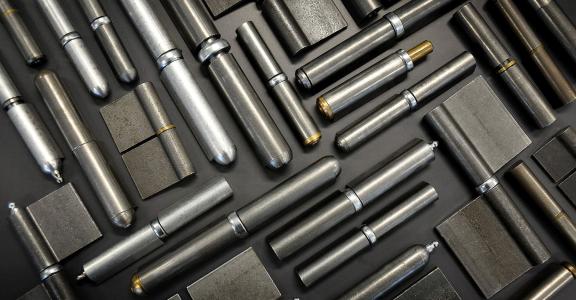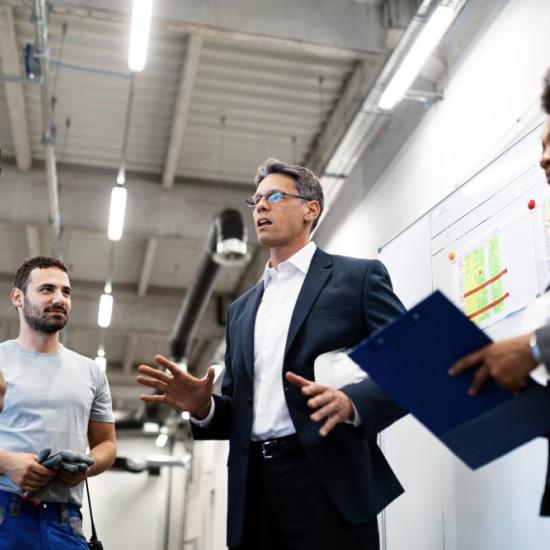For more than 60 years, Paumelles Liégeoises has been producing a wide range of metal weld-on hinges, often in limited series, for a variety of applications and sectors ranging from wind turbines and reinforced doors to letterboxes, cars and wagons. Eighty per cent of its production is exported. This SME specialises in standard and custom-made products, produced in small quantities. A small amount of standard components are kept in stock to deliver at very short notice during assemblies.
The company's strength lies in the quality of its products and meeting promised delivery times (93 per cent delivered on time). Due to lack of capacity, the company always refuses large one-off orders.
In 2021, Paumelles Liégeoises saw the production volume grow, which required a lot of (re)planning of work and change in priorities to maintain high service levels. This caused a lot of stress, especially in the preparatory steps at the office, leaving no time to think about long-term actions. So, while free capacity was needed in the office, increased efficiency became a strategic priority aimed at maintaining short lead times of 1 day to 1 week and keeping customers satisfied in the long term.
Thanks to previous interventions, the company had achieved what it wanted, although there were still too many movements on the shop floor, where the company was still struggling with excessive administration.
Missing link: appropriate IT
The company was already using the QRM methodology in production, but now wanted to go a step further and start using digital technologies to support its QRM journey and logistics. To do so, it enlisted the help of Sirris as part of the QRM 4.0 project to review its administrative processes.
To get a picture of how things were going, every part of order processing was looked at: the lead time of a customer order in the office, the workflow in the office, the production lead time of components and the lead time in assembly.
The analysis showed that a lot of capacity was lost in the office due to the use of an inappropriate ERP system that did not provide real-time insight into what was going on in production. On the production floor, a lack of structure in the assembly area was revealed which prevented operators to immediately see which jobs had the highest priority.
From there, the company made some changes on the shop floor with an emphasis on visual communication and invested in a new ERP system.
Each link of the chain connected
QRM 4.0 gave the company the support it needed to achieve a better overview: employees now get the right information in the right place at the right time.
Today, as soon as a request for a quotation arrives, we can anticipate not only whether the request is valid, but also what the customer's needs are, so that we can start the machines as soon as the order arrives. In this way, we are ahead of the game, in the process and on customer demand.
Paumelles Liégeoises managed to improve its flexibility at all levels by giving employees immediate access to all the necessary info and providing a good picture of the whole process. This allows everyone, including in the office, to be aware of what is happening on the production floor in real time.
|



